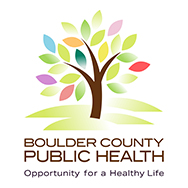Testing and Cleanup
The Colorado Department of Public Health and Environment certifies and maintains a list of consultants and contractors that are certified to test and remediate meth-affected properties in Boulder County.
Boulder County Public Health relies on the expertise of certified consultants to evaluate the extent of contamination within a structure and the potential spread of contamination to other units within a multi-unit structure.
Please contact Boulder County Public Health at 303-441-1564 with additional questions regarding testing or remediation of your methamphetamine-affected property.
If you suspect methamphetamine manufacture or use, please get in touch with local law enforcement or the Boulder County Drug Task Force at 303-441-4444
Owner Responsibility
When methamphetamine contamination is found above the cleanup levels established in the Colorado Board of Health Regulation No. 6 CCR 1014, Cleanup of Methamphetamine-Affected Properties, then the property is deemed a Methamphetamine-Affected Property.
When a property has been identified as a Methamphetamine Affected Property, there are several obligations that the property owner must meet:
Per the above regulations, property owners are required to:
- Prevent entry into the property by any individual unless they are properly trained and have the appropriate personal protective equipment (PPE) to do so.
- Hire a State-certified consultant to conduct a complete preliminary assessment of the property.
- Hire a State-certified contractor to clean up the property under the requirements of the Colorado Board of Health regulation or demolish the property.
- Hire a state-certified consultant to conduct clearance-level sampling of the remediated property.
- Submit the final clearance report to the Governing Body, as defined in CRS §25-18.5-105(1) and (2), which includes Boulder County Public Health at 3450 Broadway St, Boulder, CO 80304, and the Colorado Department of Public Health and Environment.
Ordinance, Regulation, and Statutes
In 2007, the Boulder County Commissioners adopted ordinance No. 2006-1 to help ensure the public is not unnecessarily exposed to methamphetamine. Methamphetamine-affected properties pose significant risks to public health. Boulder County Public Health works closely with other local agencies and community members to ensure that the cleanup of methamphetamine-affected properties in Boulder County meets existing public health standards.
Working under the methamphetamine cleanup guidelines and regulations developed by the Colorado Department of Public Health and Environment, Boulder County Public Health is working to ensure the safe cleanup of methamphetamine-affected properties in Boulder County.
If you learn that your property has been used for the manufacturing of methamphetamine, please visit the Colorado Department of Public Health & Environment (CDPHE) website for guidelines on testing and cleanup of methamphetamine-affected properties.



